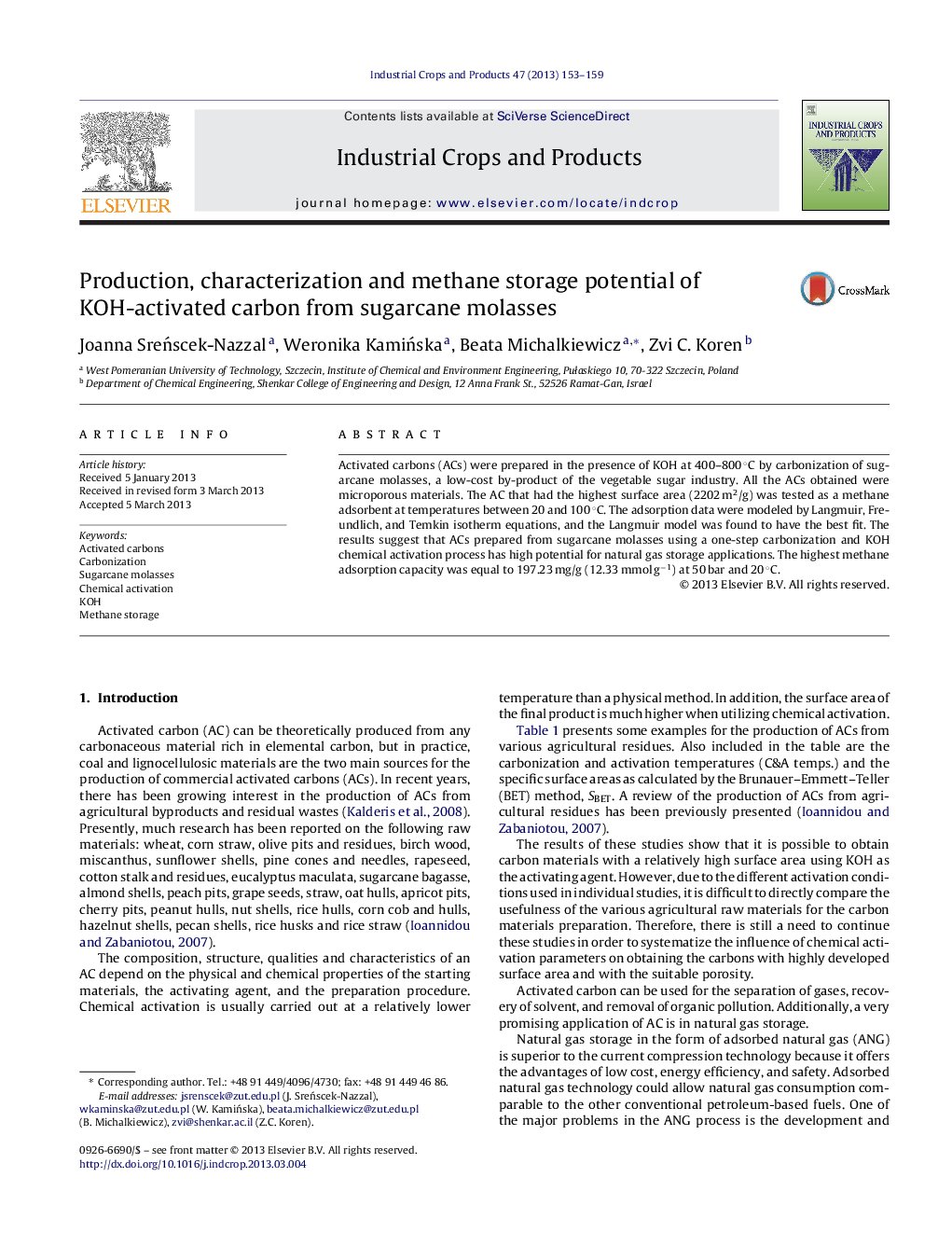| Article ID | Journal | Published Year | Pages | File Type |
|---|---|---|---|---|
| 4513593 | Industrial Crops and Products | 2013 | 7 Pages |
•High added value material produced from agriculture waste of the sugar industry.•Active carbons (ACs) from molasses: well-developed pores, high adsorption capacity.•Very high surface area (2202 m2/g) calculated by the BET method.•ACs can be potential adsorbents for natural gas storage applications.•CH4 adsorption capacity equal to 197.23 mg/g at 50 bar and 20 °C.
Activated carbons (ACs) were prepared in the presence of KOH at 400–800 °C by carbonization of sugarcane molasses, a low-cost by-product of the vegetable sugar industry. All the ACs obtained were microporous materials. The AC that had the highest surface area (2202 m2/g) was tested as a methane adsorbent at temperatures between 20 and 100 °C. The adsorption data were modeled by Langmuir, Freundlich, and Temkin isotherm equations, and the Langmuir model was found to have the best fit. The results suggest that ACs prepared from sugarcane molasses using a one-step carbonization and KOH chemical activation process has high potential for natural gas storage applications. The highest methane adsorption capacity was equal to 197.23 mg/g (12.33 mmol g−1) at 50 bar and 20 °C.
Graphical abstractFigure optionsDownload full-size imageDownload as PowerPoint slide
